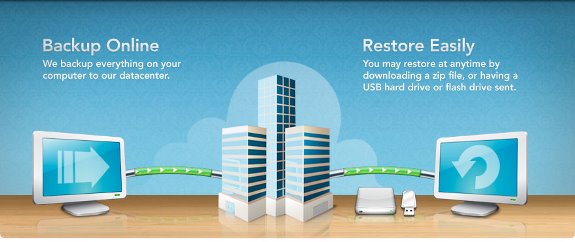Developments in the world of technology and security have led to the appearance of cloud storage as the perfect means to safely store and manage files, without worrying about their physical location.
Since security issues have largely been debated due to increased hacker attacks and vulnerabilities in implemented security measures, cloud storage often provides a professional solution for those seeking to keep their personal data and files safe.
While some of you might argue that choosing an online backup and storage solution doesn’t come cheap, free cloud services are available and offer the same protection as premium-rated offers. Figuring out how much storage you need is an entirely new story and that’s when a careful assessment of your personal data and media files should be in order.

Backup, Storage … or Both?
Choosing an online backup and storage solution (such as Safebox – powered by Bitdefender Antivirus) means you’ll effectively be uploading your files on a remote server (that could even be located on the other side of the planet) and at the same time you’ll have access to them 24 hours a day, provided you have an active internet connection.
Besides obviously freeing up some much needed storage space on your hard drive, your in-the-cloud files will never be exposed to the same threats that your PC/device might be experiencing. As such, you can always choose to protect your most sensitive files if your computer’s security might be exposed at some point.
A large multimedia collection could also be backed up through cloud storage and the fact that you can share some of those files with your friends by simply sending over an URL link is always a neat trick. However, you can schedule system backups that can automatically be synced with the cloud storage, enabling fast and safe access to a time-machine-like feature.
All your data is secured using real-time encryption applied both when you upload the files and when they’re stored on actual remote servers. Regardless of the files you’re uploading or the location you’re uploading them from, the encryption algorithms are there to make sure that everything is as cryptic as possible.
Cross-platform compatibility is one of the main features you should be looking for when going with a particular service, because you might end up uploading or editing files from tablets, smartphones and even Windows or Linux based computers. As such, having support for all these operating systems is a must.
How much storage is enough?
Most often you’ll find the preferred amount of offered cloud space is 2GB, but it can be upgraded by means of referral links or even coupon codes from various giveaways or promotions. The trick is to accurately evaluate the amount of space you need before signing up with a particular service, because you might find that you have way too many MP3 files for just 2GB.
Some cloud storage providers even serve up to 10 GB for free, just to build up a largely populated community in a short amount of time. Keeping a close eye on security news can be useful in these instances because having 10 GB of in-the-cloud storage is something that’s usually associated with paid subscriptions.
Of course, you can always opt for storage space ranging in the upper hundreds of gigabits, but that doesn’t mean that it’s going to be cheap. If anything, such services will nicely stress your wallet on a monthly basis but at least you’ll no longer have to worry about hardware maintenance and power bills.
Regardless the solution or the purposes for which you intend to use cloud storage, the idea is that you should really weigh the pros and cons about having free or paid subscriptions against the amount of storage space that you require.
No one is stopping you from having multiple free accounts or even use multiple services if you’re really paranoid about uploading your files in the cloud, but you need to make sure that passwords for each account are kept safe and that you have clients for all operating systems and gadgets.




